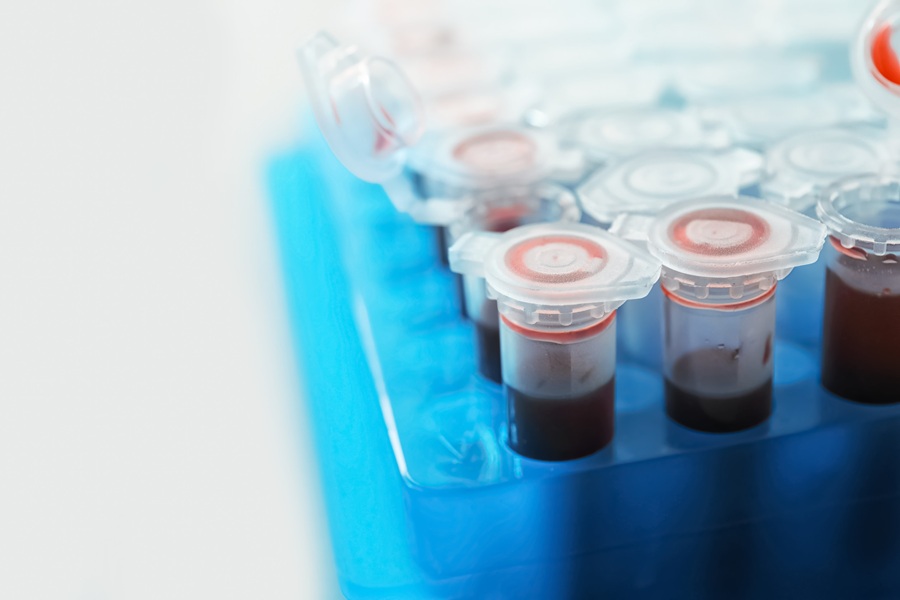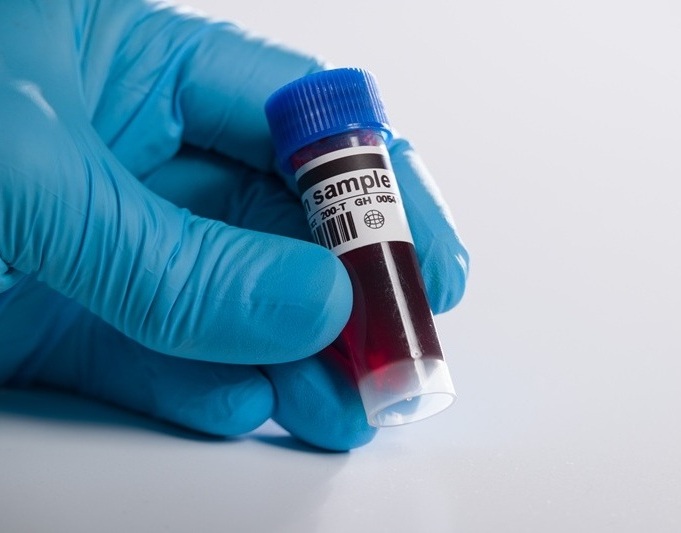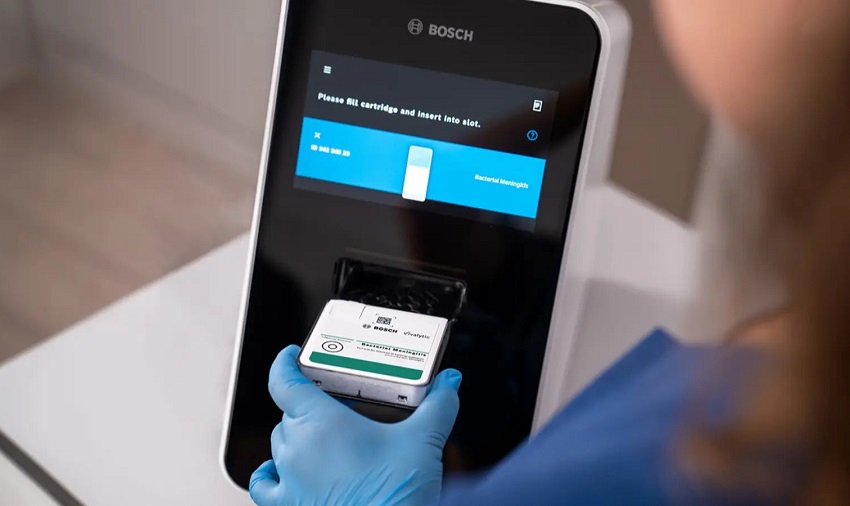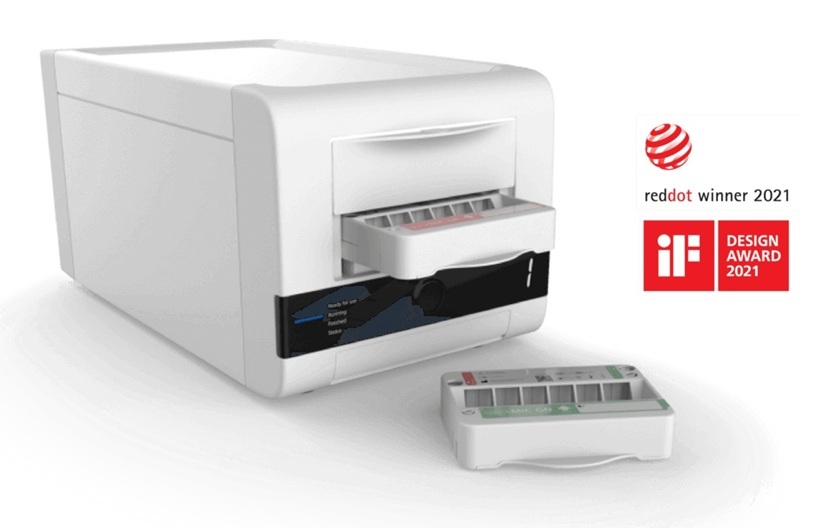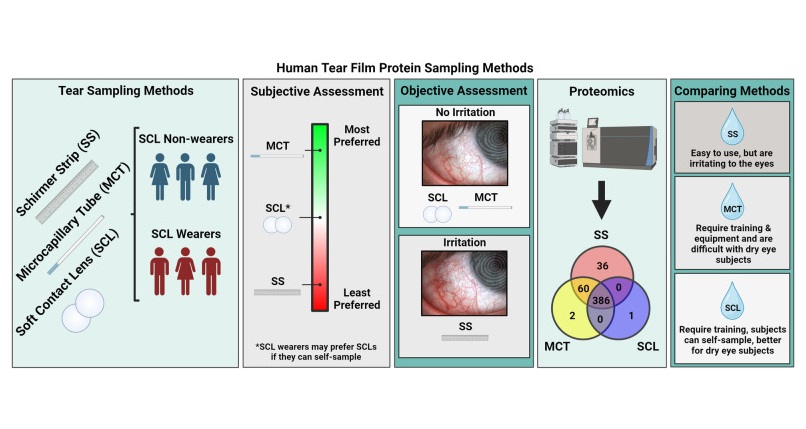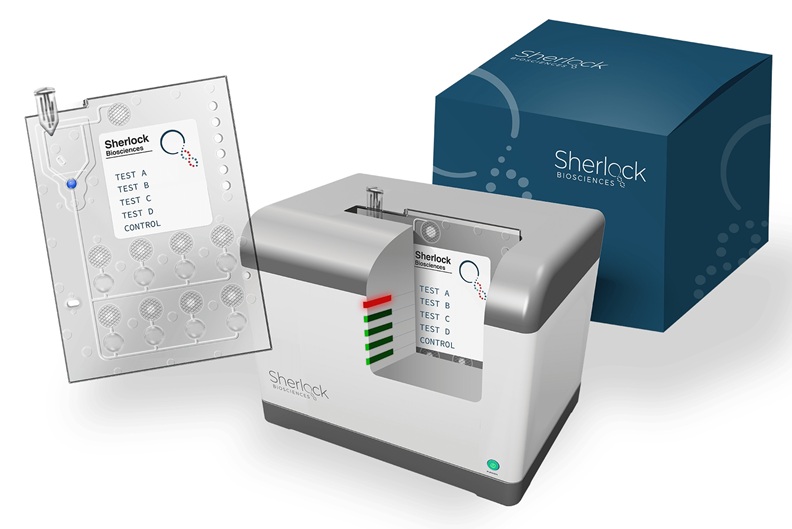Expo
Medica
view channel
view channel
view channel
view channel
view channel
view channel
view channel
view channel
view channel
Clinical Chem.Molecular DiagnosticsHematology
MicrobiologyPathologyTechnologyIndustry
Events

- Biosensing Technology Breakthrough Paves Way for New Methods of Early Disease Detection
- New Saliva Test Rapidly Identifies Paracetamol Overdose
- POC Saliva Testing Device Predicts Heart Failure in 15 Minutes
- Screening Tool Detects Multiple Health Conditions from Single Blood Drop
- Integrated Chemistry and Immunoassay Analyzer with Extensive Assay Menu Offers Flexibility, Scalability and Data Commutability
- Study Advances Possible Blood Test for Early-Stage Alzheimer's Disease
- New Biomarkers to Improve Early Detection and Monitoring of Kidney Injury
- ‘Two-Faced’ Gene to Help Identify Individuals at Greater Risk of Developing Esophageal Cancer
- Rapid Nasal Swab Test Detects Asthma Type in Kids
- Nanopore-Based Tool Detects Disease with Single Molecule
- Streamlined Approach to Testing for Heparin-Induced Thrombocytopenia Improves Diagnostic Accuracy
- POC Hemostasis System Could Help Prevent Maternal Deaths
- New Test Assesses Oxygen Delivering Ability of Red Blood Cells by Measuring Their Shape
- Personalized CBC Testing Could Help Diagnose Early-Stage Diseases in Healthy Individuals
- Non-Invasive Test Solution Determines Fetal RhD Status from Maternal Plasma
- AI Tool Uses Routine Blood Tests to Predict Immunotherapy Response for Various Cancers
- Blood Test Can Predict How Long Vaccine Immunity Will Last
- Microfluidic Chip-Based Device to Measure Viral Immunity
- Simple Blood Test Could Detect Drug Resistance in Ovarian Cancer Patients
- Advanced Imaging Method Maps Immune Cell Connections to Predict Cancer Patients Survival
- Genetic Testing Could Improve Treatment for Virulent Multidrug-Resistant Fungus Candida Auris
- Ultra-Rapid AST System Provides Critical Results for Sepsis Patients
- High-Throughput AST System Uses Microchip Technology to Rapidly Analyze Bacterial Samples
- Syndromic PCR Test Rapidly and Accurately Identifies Pathogens in Patients with Tropical Fever Infections
- 1 Hour Direct-From-Blood Test Detects 95% Of Pathogens Associated with Bloodstream Infections
- FET-Based Sensors Pave Way for Portable Diagnostic Devices Capable of Detecting Multiple Diseases
- Paper-Based Biosensor System to Detect Glucose Using Sweat Could Revolutionize Diabetes Management
- First AI-Powered Blood Test Identifies Patients in Earliest Stage of Breast Cancer
- Optical Biosensor Rapidly Detects Monkeypox Virus at Point of Care
- Nanomaterial-Based Diagnostic Technology Accurately Monitors Drug Therapy in Epilepsy Patients
- OraSure Technologies Acquires Sherlock Biosciences
- Worldwide Initiative Aims to Develop Globally Generalizable Blood-Based Tests for Alzheimer’s Disease
- Hologic Enters into Agreement with CDC for H5N1 Bird Flu Test Development
- Quanterix Acquires Magnetic Bead Tech Firm Emission
- LGC Acquires German Quality Controls Maker DiaMex
- Gene Panel Predicts Disease Progession for Patients with B-cell Lymphoma
- New Method Simplifies Preparation of Tumor Genomic DNA Libraries
- New Tool Developed for Diagnosis of Chronic HBV Infection
- Panel of Genetic Loci Accurately Predicts Risk of Developing Gout
- Disrupted TGFB Signaling Linked to Increased Cancer-Related Bacteria
- New Self-Collection Medical Test Makes HPV Screening Easier for Patients
- Biolasers Light Up Circulating Tumor Cells in Bloodstream of Cancer Patients
- Mini-Tumors Cultivated from Circulating Cancer Cells to Help Develop Targeted Therapies
- World’s First AI-Native Cancer Diagnostic to Transform Precision Medicine
- Advanced Imaging Technique Helps See Low-Density Lipoprotein-Cholesterol in New Light

Expo
 Medica
view channel
view channel
view channel
view channel
view channel
view channel
view channel
view channel
view channel
view channel
view channel
view channel
view channel
view channel
Clinical Chem.Molecular DiagnosticsHematology
MicrobiologyPathologyTechnologyIndustry
Events
Advertise with Us
Medica
view channel
view channel
view channel
view channel
view channel
view channel
view channel
view channel
view channel
view channel
view channel
view channel
view channel
view channel
Clinical Chem.Molecular DiagnosticsHematology
MicrobiologyPathologyTechnologyIndustry
Events
Advertise with Us

 Medica
Medica
- Biosensing Technology Breakthrough Paves Way for New Methods of Early Disease Detection
- New Saliva Test Rapidly Identifies Paracetamol Overdose
- POC Saliva Testing Device Predicts Heart Failure in 15 Minutes
- Screening Tool Detects Multiple Health Conditions from Single Blood Drop
- Integrated Chemistry and Immunoassay Analyzer with Extensive Assay Menu Offers Flexibility, Scalability and Data Commutability
- Study Advances Possible Blood Test for Early-Stage Alzheimer's Disease
- New Biomarkers to Improve Early Detection and Monitoring of Kidney Injury
- ‘Two-Faced’ Gene to Help Identify Individuals at Greater Risk of Developing Esophageal Cancer
- Rapid Nasal Swab Test Detects Asthma Type in Kids
- Nanopore-Based Tool Detects Disease with Single Molecule
- Streamlined Approach to Testing for Heparin-Induced Thrombocytopenia Improves Diagnostic Accuracy
- POC Hemostasis System Could Help Prevent Maternal Deaths
- New Test Assesses Oxygen Delivering Ability of Red Blood Cells by Measuring Their Shape
- Personalized CBC Testing Could Help Diagnose Early-Stage Diseases in Healthy Individuals
- Non-Invasive Test Solution Determines Fetal RhD Status from Maternal Plasma
- AI Tool Uses Routine Blood Tests to Predict Immunotherapy Response for Various Cancers
- Blood Test Can Predict How Long Vaccine Immunity Will Last
- Microfluidic Chip-Based Device to Measure Viral Immunity
- Simple Blood Test Could Detect Drug Resistance in Ovarian Cancer Patients
- Advanced Imaging Method Maps Immune Cell Connections to Predict Cancer Patients Survival
- Genetic Testing Could Improve Treatment for Virulent Multidrug-Resistant Fungus Candida Auris
- Ultra-Rapid AST System Provides Critical Results for Sepsis Patients
- High-Throughput AST System Uses Microchip Technology to Rapidly Analyze Bacterial Samples
- Syndromic PCR Test Rapidly and Accurately Identifies Pathogens in Patients with Tropical Fever Infections
- 1 Hour Direct-From-Blood Test Detects 95% Of Pathogens Associated with Bloodstream Infections
- FET-Based Sensors Pave Way for Portable Diagnostic Devices Capable of Detecting Multiple Diseases
- Paper-Based Biosensor System to Detect Glucose Using Sweat Could Revolutionize Diabetes Management
- First AI-Powered Blood Test Identifies Patients in Earliest Stage of Breast Cancer
- Optical Biosensor Rapidly Detects Monkeypox Virus at Point of Care
- Nanomaterial-Based Diagnostic Technology Accurately Monitors Drug Therapy in Epilepsy Patients
- OraSure Technologies Acquires Sherlock Biosciences
- Worldwide Initiative Aims to Develop Globally Generalizable Blood-Based Tests for Alzheimer’s Disease
- Hologic Enters into Agreement with CDC for H5N1 Bird Flu Test Development
- Quanterix Acquires Magnetic Bead Tech Firm Emission
- LGC Acquires German Quality Controls Maker DiaMex
- Gene Panel Predicts Disease Progession for Patients with B-cell Lymphoma
- New Method Simplifies Preparation of Tumor Genomic DNA Libraries
- New Tool Developed for Diagnosis of Chronic HBV Infection
- Panel of Genetic Loci Accurately Predicts Risk of Developing Gout
- Disrupted TGFB Signaling Linked to Increased Cancer-Related Bacteria
- Mast Group Introduces New MAST CARBA PAcE for Rapid Carbapenemase Detection
- DRG Instruments Demonstrates DRG:HYBRID-XL Fully Automated Lab Analyzer
- Diatron Introduces New Aquila 5Dretic 5-Part Differential Hematology Analyzer
- Alifax S.r.l. Highlights First Automated System for Bacterial Culture and Susceptibility Testing
- Erba Mannheim Showcases New Launches at MEDICA 2019
- POC System that Requires Single DNA Molecule for Rapid Detection of Multidrug-Resistant Pathogens Unveiled at MEDICA 2021
- Icomes Lab Demonstrates World's Smallest and Lightest Electronic Pipette for PCR Testing at MEDICA 2021
- Bosch Exhibits Vivalytic All-in-One Analyzer for PCR Rapid Tests at MEDICA 2021
- Co-Diagnostics Introduces Its Revolutionary Coprimer Technology at MEDICA 2021
- MGI Tech Showcases World-First High-Throughput Automated Sample Transfer Processing System at MEDICA 2021
- Biovendor Group Presents CLIA Solution for Complex Diagnostics at MEDICA 2022
- Diatron Exhibits Advanced Hematology and Clinical Chemistry Analyzers at MEDICA 2022
- Immundiagnostik AG Presents New PCR Test MutaPLEX RespiraScreen4_Diff_seqc at MEDICA 2022
- Eurotrol Presents the Future of Blood Gas Controls at MEDICA 2022
- Absology Exhibits POCT Immunoassay Analyzer with Testing Time of Five Minutes
- Absology Showcases Latest Advancements in Medical Diagnostics
- Oruba Presents State-of-the-Art Self-Operating Uroflowmeters
- Awareness Technology Exhibits Incredibly Flexible ChemWell 2 ELISA and Chemiluminescent Analyzer
- BioVendor Group Demonstrates Unique IVD Platform and Immunoblot Test
- Greiner Bio-One Highlights Magnetic 3D Cell Culture Technology
- BioVendor Group Introduces Groundbreaking Immunological Biomarker
- Getein Biotech Showcases Latest POCT Analyzers
- Fapon Highlights Innovative IVD Total Solutions and Localization Services
- Wondfo Presents Advanced Solutions in CLIA Testing and Blood Gas Analysis
- Globe Scientific Exhibits Cutting-Edge Solutions for Meeting Laboratory Needs
- New Self-Collection Medical Test Makes HPV Screening Easier for Patients
- Biolasers Light Up Circulating Tumor Cells in Bloodstream of Cancer Patients
- Mini-Tumors Cultivated from Circulating Cancer Cells to Help Develop Targeted Therapies
- World’s First AI-Native Cancer Diagnostic to Transform Precision Medicine
- Advanced Imaging Technique Helps See Low-Density Lipoprotein-Cholesterol in New Light

























.jpg)
